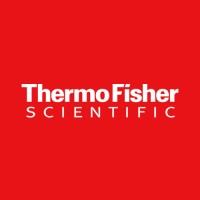NQO1 / DyLight 550 / A180
Product Details
| Description | NQO1 Monoclonal Antibody, DyLight 550 conjugate (A180). NQO1 is a 2-electron reductase that detoxifies quinones derived from the oxidation of phenolic metabolites of benzene. Individuals homozygous for the T/T form of the 609C-T polymorphism have an increased risk of benzene hematotoxicity.IF 1:50, IHC (P) 1:100, IP 1:1000, WB 1:1000-1:10,000, ICC 1:50 | |
|---|---|---|
| Conjugate | DyLight 550 | |
| Clone | A180 | |
| Target Species | Canine, Human, Non-Human Primate, Rat | |
| Applications | IF, ICC, WB | |
| Supplier | Thermo Fisher Scientific | |
| Catalog # | Sign in to view product details, citations, and spectra | |
| Size | ||
| Price | ||
| Antigen | ||
| Host | ||
| Isotype |
About NQO1
This gene is a member of the NAD(P)H dehydrogenase (quinone) family and encodes a cytoplasmic 2-electron reductase. This FAD-binding protein forms homodimers and reduces quinones to hydroquinones. This protein's enzymatic activity prevents the one electron reduction of quinones that results in the production of radical species. Mutations in this gene have been associated with tardive dyskinesia (TD), an increased risk of hematotoxicity after exposure to benzene, and susceptibility to various forms of cancer. Altered expression of this protein has been seen in many tumors and is also associated with Alzheimer's disease (AD). Alternate transcriptional splice variants, encoding different isoforms, have been characterized. [provided by RefSeq, Jul 2008]
This gene is a member of the NAD(P)H dehydrogenase (quinone) family and encodes a cytoplasmic 2-electron reductase. This FAD-binding protein forms homodimers and reduces quinones to hydroquinones. This protein's enzymatic activity prevents the one electron reduction of quinones that results in the production of radical species. Mutations in this gene have been associated with tardive dyskinesia (TD), an increased risk of hematotoxicity after exposure to benzene, and susceptibility to various forms of cancer. Altered expression of this protein has been seen in many tumors and is also associated with Alzheimer's disease (AD). Alternate transcriptional splice variants, encoding different isoforms, have been characterized. [provided by RefSeq, Jul 2008]
About DyLight 550
DyLight™ 550 has an excitation peak at 562 nm and an emission peak at 576 nm and is spectrally similar to Alexa Fluor™ 546, Alexa Fluor™ 555, Cy3 and TRITC. DyLight™ 550 is most commonly used in flow cytometery and fluorescence microscopy applications.
DyLight™ 550 has an excitation peak at 562 nm and an emission peak at 576 nm and is spectrally similar to Alexa Fluor™ 546, Alexa Fluor™ 555, Cy3 and TRITC. DyLight™ 550 is most commonly used in flow cytometery and fluorescence microscopy applications.
Experiment Design Tools
Panel Builders
Looking to design a Microscopy or Flow Cytometry experiment?
Validation References
Reviews & Ratings
| Reviews |
|---|
Looking for more options?
549 NQO1 antibodies from over 25 suppliers available with over 42 conjugates.





